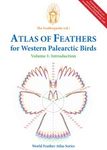About this book
"If birds left tracks in the sky, what would they look like?". That was the simple question that planted the seed of this complex work that combines nature, art, and technology. Since then, Xavi Bou has been looking for the answer, perfecting his technique and seeking out new species and behaviours, while gaining recognition though international publications and exhibitions.
This book represents a selection of images from the last seven years of Xavi's Ornithographies project. The main part of the book showcases 65 horizontal images, each professionally reproduced over a double page spread. And to better reproduce the vertical images, within the same book there is also a section bound to open vertically, with eight vertical double-page images and five unique triptychs. An index provides details on the species and location of each photo, as well as many interesting explanations to help better understand and appreciate the images.
From first glance, it is clear that we are not dealing with classic bird portraits. In fact, every figure merges to shape the image of something else: movement. We could say that the result is a graphical representation of the flight of these animals. Xavi's special technique takes slow-motion recordings with a digital film camera and overlaps them in post-production to masterfully create an extraordinary image revealing the hidden beauty of bird flight. The effect is dreamlike images, sometimes framed by extraterrestrial landscapes and other times floating in an ethereal space of unreal colours, in which unrecognizable but organic strokes tear the picture like a furious swarm or a lonely brushstroke.
The aesthetic impact of these images is immediate, but if we know what species and what circumstances have generated such a composition, we also gain another layer of understanding of these natural processes that were previously invisible to us. So, while the premise is that the sky is a canvas and the birds the brushes that paint on it, we must also recognize the role of Xavi Bou as curator, as his task is to search out, observe, and select each type of flight and make visible the particular choreography of each species.
Xavi explains that the project started without many pretensions, but that little by little it became his passion and profession. He never could have imagined the repercussions it would have, nor the interest it continues to arouse. He hopes that his combined love for nature and art will spark that love in others.
Customer Reviews
Biography
Xavi Bou’s grandfather instilled in him a passion for nature from the time he was a little boy. That passion impelled Xavi toward the natural sciences, and in 2003 he graduated with a degree in Geology from the University of Barcelona. In 2004 he went on to complete his studies in photography, and for the next decade, Xavi worked in the advertisement and fashion industry, combining it with teaching photography.
However, Xavi’s love of nature was always present, so in 2012 he embarked on “Ornithographies”; photography inspired by his curiosity about the invisible patterns traced by birds in flight. “My intention is to capture the beauty of the bird’s flight in a single moment, making the invisible visible. Ornithographies moves away from the purely scientific practice of Chronophotography that 19th-century photographers Eadward Muybridge and Étienne Julies Marey developed. It is the balance between art and science, a project of naturalist discovery, and, at the same time, an exercise of visual poetry”.
In his work, art and science unite to capture a moment that is past, present, and future, all at once. Xavi’s 2015 debut of Ornithographies instantly caught the attention of international publications and collectors, and his work has since been published in National Geographic, The Guardian, Der Spiegel, Geo, and Sonntag, among many others. Xavi has exhibited Ornithographies in Australia, Holland, the United States, Spain, Switzerland, France, Russia, and Greece.
When Xavi is not setting up his tripod on a roof, rock, or windswept plain, he is at work in his studio in the centre of Gràcia, Barcelona, preparing future exhibitions and projects.







































